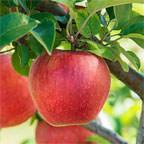Q.I Have A Weeping Willow Problem!
A tree surgeon recently cut down my mature weeping willow as he said it was rotting. It is now just a stump🥺. I am just concerned as it had been there a very long time and had apparently been planted to absorb water from an underground stream - the garden is sloped towards the house. My question is whether the roots will keep absorbing water and potentially it may regrow from the stump or whether I should quickly plant another one close by?!
- A.
There is a possibility, as long as the rot was controlled or treated, as well. It may be alive still. If so, then good management of diseases and proper care will ensure that the tree can still function as you wanted it to. It may never be as impressive as the original, but willows tend to be quite hardy.
Here are a couple of articles that will offer some information:
https://www.gardeningknowhow.com/garden-how-to/info/using-fungicides-in-garden.htm
https://www.gardeningknowhow.com/ornamental/trees/willow/planting-weeping-willow-trees.htm
Was this answer useful?00



